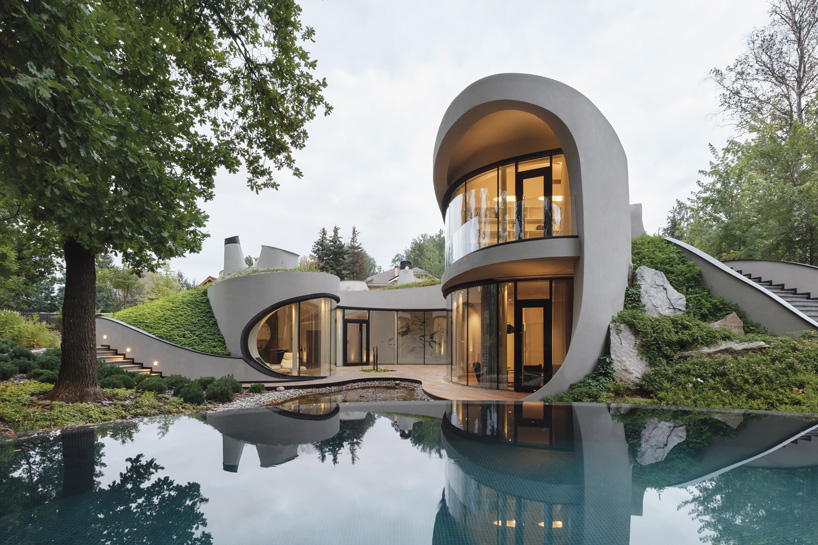How CDA Architects Supply Cutting-Edge Solutions for Sustainable Architecture
How CDA Architects Supply Cutting-Edge Solutions for Sustainable Architecture
Blog Article
Recognizing the Collaborative Process Between Engineers and Designers in Modern Building Projects
The collaborative procedure between architects and engineers is important in modern building jobs, as it balances layout intent with design usefulness. Checking out these characteristics discloses insights that might substantially impact task end results and total sector standards.
The Significance of Partnership
The joint synergy between engineers and engineers is important for the effective understanding of any building and construction task. This partnership combines unique expertise and viewpoints, enabling the assimilation of cutting-edge layout with practical engineering options. By interacting, designers and designers can guarantee that a job not only meets visual and practical demands but also abides by safety, sustainability, and budgetary constraints.
Cooperation promotes a shared vision, assisting in the placement of objectives and assumptions from the beginning. This alignment is critical in dealing with possible challenges and mitigating risks that could emerge during the task lifecycle. A collective strategy permits for the reliable allowance of resources, enhancing both time and price.
The significance of collaboration encompasses the iterative process of layout and building and construction, where responses from designers can inform architectural choices, resulting in even more feasible and lasting styles. Alternatively, architects can inspire engineers to think creatively about how to achieve architectural integrity without jeopardizing imaginative intent. Inevitably, the joint partnership between architects and engineers is not merely beneficial; it is essential to the development of high-quality, practical, and cutting-edge constructed environments that fulfill the requirements of society.
Interaction Techniques and Devices
Effective interaction techniques and devices are essential for promoting partnership in between architects and engineers throughout the project lifecycle. Establishing clear networks of interaction is necessary to ensure that all employee are straightened with project purposes, timelines, and obligations. Normal conferences, both in-person and online, provide opportunities for stakeholders to review progress, address worries, and make informed decisions.
Utilizing task management software application, such as BIM (Building Details Modeling) platforms, boosts cooperation by enabling real-time sharing of layout alterations and technical requirements. These devices promote openness, enabling architects and designers to picture changes and assess their effect on the general task.

Shared Goals and Task Vision

Developing shared goals entails open dialogue and a thorough understanding of each discipline's payments. Engineers normally concentrate on layout intent, spatial relationships, and individual experience, while designers highlight structural stability, systems functionality, and compliance with policies (cda architects). When these perspectives are lined up, the outcome is a natural job that follows both innovative goals and technological usefulness
In addition, a distinct job vision fosters accountability amongst team members, encouraging each participant to take ownership of their role in accomplishing the desired end result. Normal check-ins discover this info here and joint workshops can even more reinforce this dedication, enabling modifications to be made as the job develops. Inevitably, a shared vision not just enhances synergy yet likewise raises the quality of the last deliverable, resulting in effective project completion.
The Function of Technology
Leveraging innovation has actually ended up being crucial in improving partnership between designers and engineers. The assimilation of sophisticated software tools promotes real-time interaction and information sharing, making it possible for teams to work much more successfully and successfully. Building Details Modeling (BIM) sticks out as an essential innovation, enabling both architects and designers to develop in-depth 3D versions that encapsulate layout intent and structural integrity. This common graph minimizes misconceptions and streamlines the decision-making procedure.
Additionally, cloud-based systems allow seamless collaboration, enabling project stakeholders to gain access to and upgrade project information from anywhere. This promotes a society of transparency and responsibility, as changes can be tracked and reviewed in real-time. Additionally, mobile applications further boost communication, providing on-site teams with immediate accessibility to project specs and updates.
Emerging innovations such as expert system and artificial intelligence are additionally beginning to play a function in anticipating analysis, helping groups determine possible issues before they emerge. Eventually, the function of official statement modern technology in architecture-engineering partnership not just improves process effectiveness but likewise enhances advancement, resulting in even more effective job results. By welcoming these technological improvements, architects and designers can ensure a much more natural and productive collaborative process throughout the building lifecycle.
Study in Successful Partnerships
Various study show the extensive impact of effective partnerships between architects and designers on task outcomes. One noteworthy example is the partnership on the High Line in New York City City, where landscape designers, designers, and urban organizers collaborated to change a deserted rail line right into a vibrant public park. This multidisciplinary technique not just enhanced the visual quality however also ensured structural safety and environmental sustainability.
An additional excellent case is the layout and construction of the Sydney Concert Hall. The partnership in between engineer JÃ ¸ rn Utzon and architectural designer Ove Arup exemplified ingenious analytic. Their partnership permitted the famous shell-like layout while dealing with complex engineering difficulties, ultimately causing an ageless building work of art.
The Burj Khalifa in Dubai additionally shows the value of joint initiatives. cda architects. The integration of style and design competence made it possible for the project group to achieve extraordinary heights while adhering to security guidelines and aesthetic vision
These examples emphasize the importance of communication, depend on, and shared objectives. In today's complex read the article building atmosphere, such collaborations are important to browsing difficulties and delivering tasks that meet both practical and visionary objectives.
Final Thought
To conclude, the collaboration between architects and designers is necessary for the success of modern-day building tasks. Efficient interaction techniques, a shared task vision, and the combination of sophisticated modern technologies are important elements that facilitate this collaboration. By fostering a society of responsibility and leveraging devices such as Structure Information Modeling (BIM), teams can navigate project complexities, guaranteeing that aesthetic, functional, and sustainability goals are accomplished. Ultimately, this synergy results in cutting-edge and successful project outcomes.
Report this page